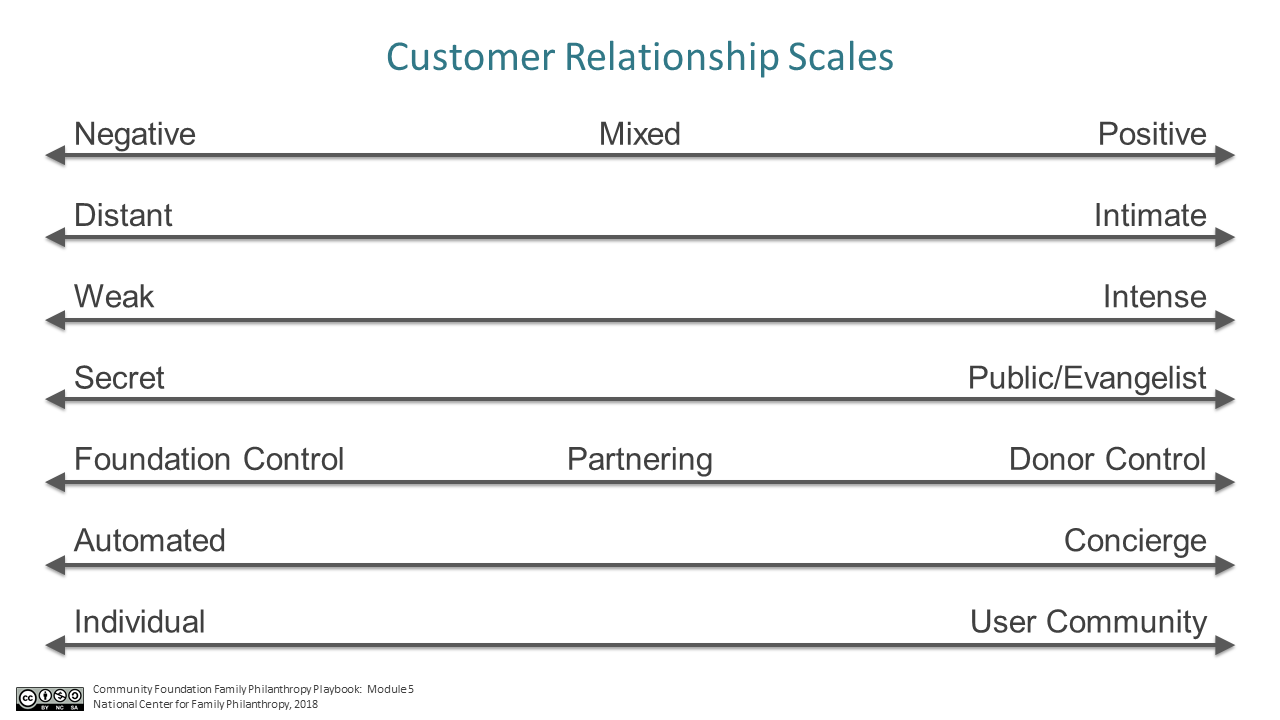Unit 2: Customer Relationships
What type of relationship does each of your customer segments want with your foundation? What type of relationship do you want with them? Some donors desire transactional relationships with no commitment while others may want proactive concierge treatment. This unit helps you define types of relationships and their related customer expectations.
TUNE-IN (6 minutes): Channels and Customer Relationship Presentation
If you’re using the Business Model Canvas Template to navigate this Playbook, this Coursera course describes types of customer relationships and channels to reach those customers.
DISCUSS: Customer Relationship Types
Proponents of the Business Model Canvas describe a few common types of customer relationships. This article by Strategyzer and short video by National Bank of Canada are good examples.
Research by the authors of Unlock the Mysteries of Your Customer Relationships identified 29 types of customer relationships with creative names such as ex-friends, flings, buddies, and master-slave. The authors also provide advice for organizing your marketing and employees around those relationship types. In the graphic below, NCFP summarized customer preferences described in those articles.
Where on each scale would each of your customer segments prefer to be? Do their hopes match yours? Can you maintain their desired type of relationship and how costly is it to do so?

READ: What Wealth Wants
What are financial services providers, a key competitor, discussing about meeting customer expectations?
In this 2016 report from BNY Mellon’s Pershing office, the authors outlined business requirements necessary for professional services firms to retain wealthy clients, including: higher standards of service, higher levels of staffing and technology, more integrated services, and pricing options beyond fees on assets – including retainer and event-driven fees.
If wealthy families are one of your customer segments, are you able to meet the expectations in this report? Could you partner or subcontract with others to do so?
DISCUSS: Tracy Gary’s Advisor Assessments
Tracy Gary’s book, Inspired Philanthropy: Step by Step Guide to Creating a Giving Plan and Leaving a Legacy, is a popular resource for donors, professional advisors, and community foundations.
She has shared exercises, worksheets, and appendices from the book on her website, including two tools for donors to assess and set expectations for their advisors:
Exercise 11.1 Checklist for Assessing an Advisor: Rates advisors on issues such as tact, compassion, being a team player, and listening skills.
Appendix A: Tools for Partnering Effectively with Advisors for Your Inspired Legacy: Provides a form and sample letters to describe the type of expertise sought, preferred styles of communication, pet peeves, and expectations for acting on the donor’s vision and values.
How do you think your donor families would rate their interactions with your staff if they used these tools? Would spouses or heirs rate you in different ways?
